#mesic forest
Text
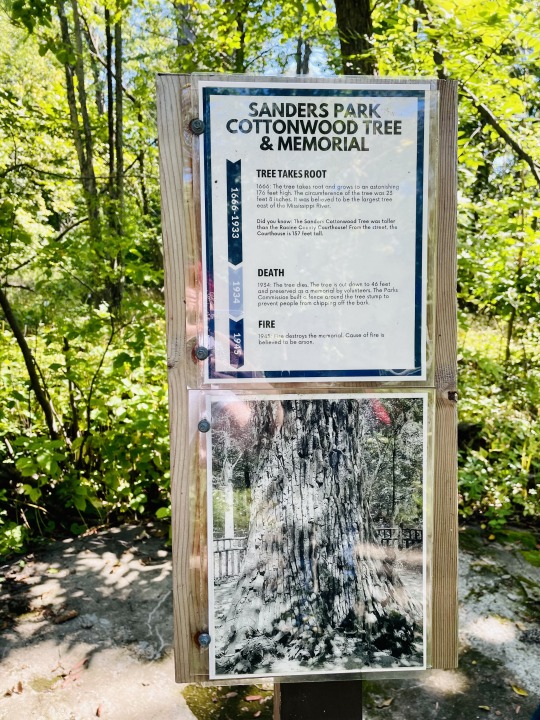


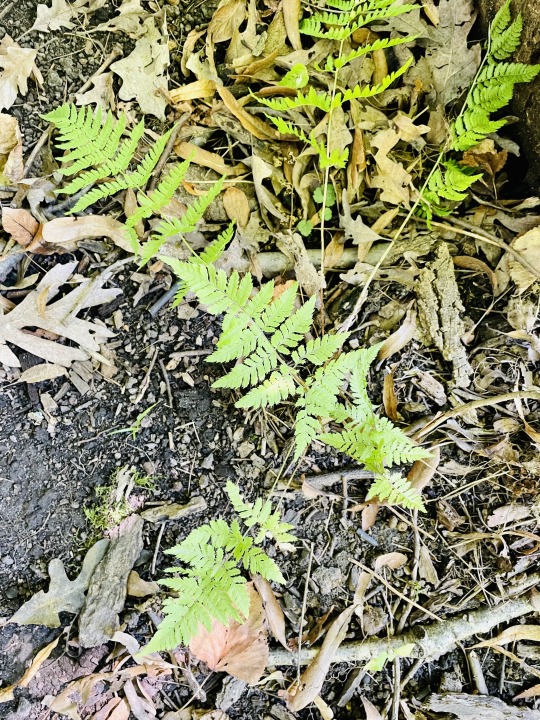
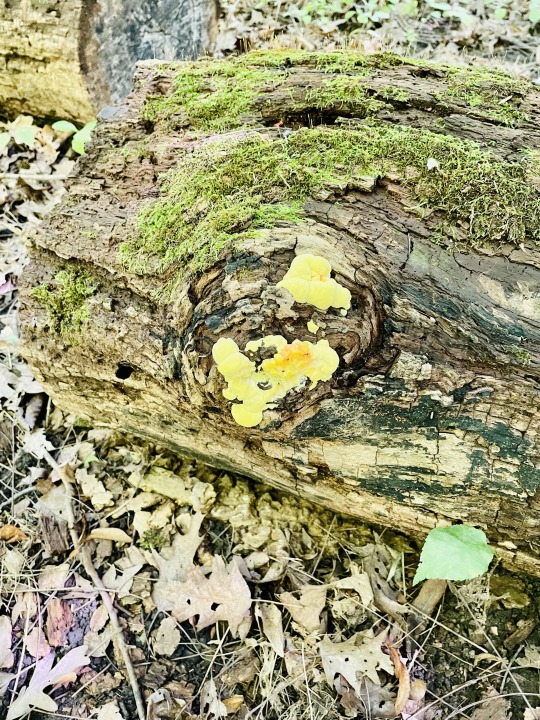
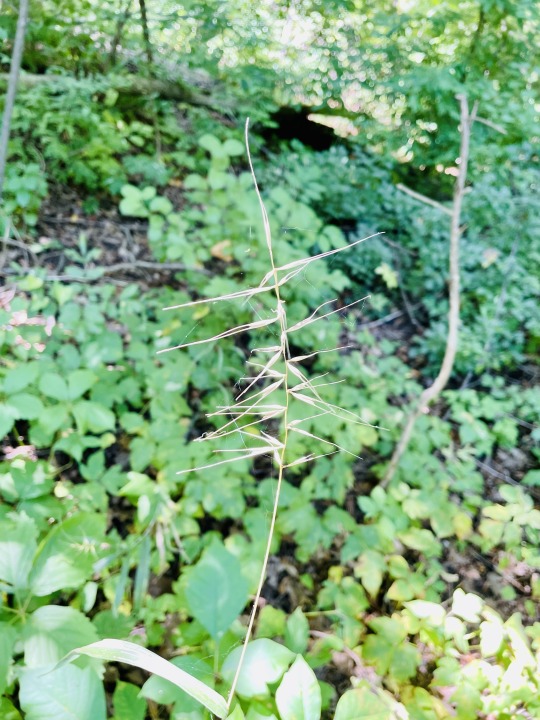

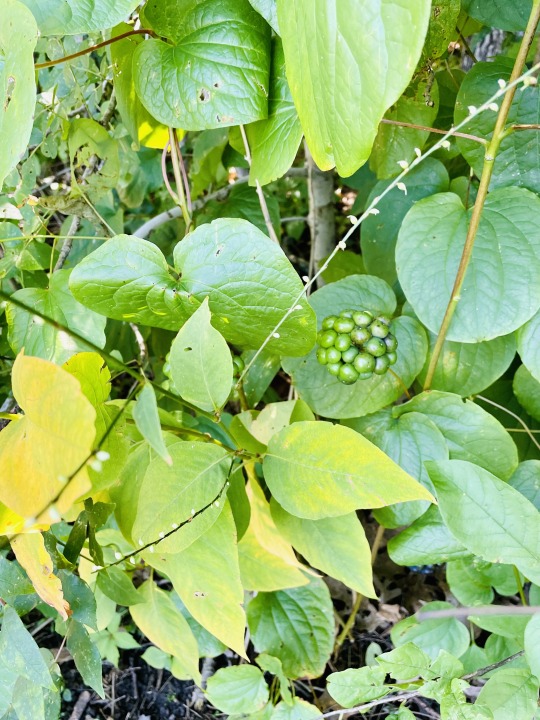
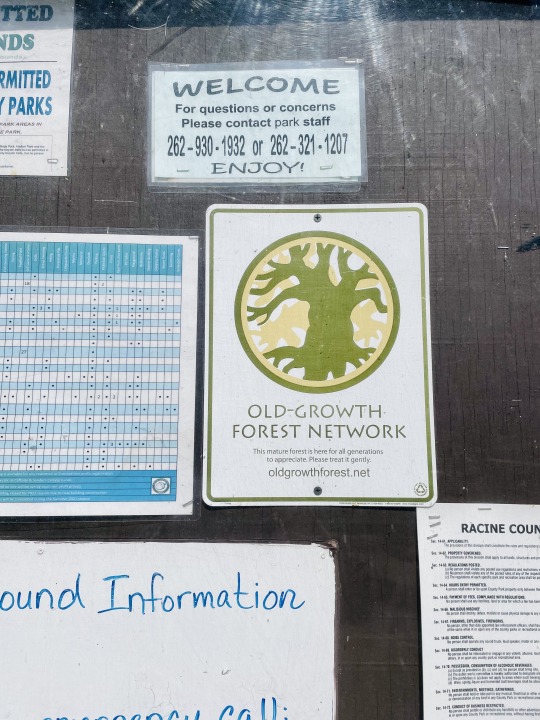
Field Trip to Sanders Park and State Natural Area, Part Two (September 15, 2023):
Cottonwood tree and memorial
Orange Touch-me-not
cracked tree
Wood fern
yellow fungus that looks like vomit
Bottlebrush grass
Zigzag goldenrod
Smilax
Old-Growth Forest Network
#jessie lynn mcmains#photography#wisconsin#southeast wisconsin#state natural area#mesic forest#trees#plants#fungi#ferns#flowers#grasses#signs#my photos
9 notes
·
View notes
Text


Prairie Trillium
Trillium recurvatum
These unique, dark trillium plants caught our eye while we were exploring woods in Jersey County, Illinois. This species usually has splotchy green leaves. dailybotany suggested these trillium plants may have upped their anthocyanin production in response to exposure to higher levels of solar radiation. There were a few of these trilliums with dark leaves in the general area, and it may have been a sunnier than usual spot in the understory of the forest there, so this theory makes sense. I still wonder if it's possible this small population carries a genetic mutation... I have explored many woods and never seen trilliums this dark. I love listening to different theories and learning new info.
Trillium recurvatum is native to much of the Mississippi River basin in the central / eastern United States. Eastern Ohio has a few populations, which are listed as potentially threatened by their DNR. There are also a couple isolated populations in North Carolina, but it's debated whether or not they were actually planted long ago. Its closest lookalike with overlapping range is trillium sessile; however, the sepals on s. recurvatum plants curve downward as the flower opens, and the stem is usually much shorter than on t. sessile. This species can grow in habitats ranging from floodplains, to mesic forests and mesic savannas. Often, they're found growing in calcareous soils or over calcium-rich rocks such as limestone.
March 20th, 2024
Jersey County, Illinois, USA
Olivia R. Myers
@oliviarosaline
#botany#trillium recurvatum#trillum#trilliums#wakerobin#wake robin#black plants#nature#woods#naturecore#forest floor#forest#forests#Illinois#nature photography#plant photography#nature walk#melanthiaceae#liliales#black#unique plants#forestcore#hiking Illinois
39 notes
·
View notes
Text
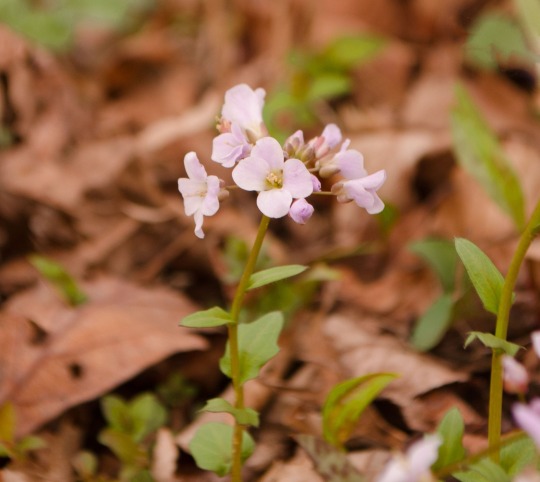
Rich woods, bluffs, mesic bottomland forests, rocky hillsides, floodplains, seepage of bogs, springy areas.
Colors range from purple to a purplish white, it is important to note that entirely white petals are rare among this species. The flowers are borne in a raceme and are typically born in early spring from mid-March to late April. ❤️🌸
#awesome#photography#nature#nature photography#photography is magic#spring photography#spring vibes#woods#flowers#wildflowers
12 notes
·
View notes
Photo
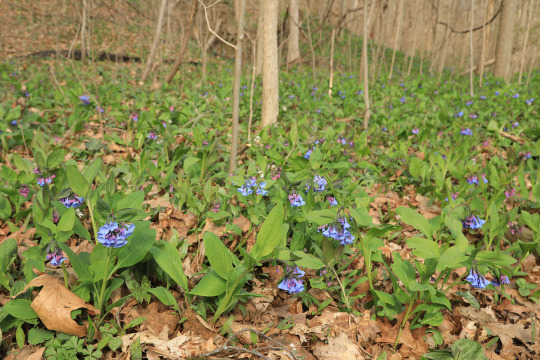
Nothing like a passel of Virginia bluebells (Mertensia virginica) to lift the spirits after a drab and dreary winter. Spring has returned to Central Appalachia’s rich, mesic woods. Photo above is from a hike this past weekend in Core Arboretum, whose expansive floodplain forest is now alive with spring ephemerals.
#appalachia#vandalia#west virginia#spring#early april#wildflowers#spring ephemerals#mertensia virginica#virginia bluebells#core arboretum
80 notes
·
View notes
Text
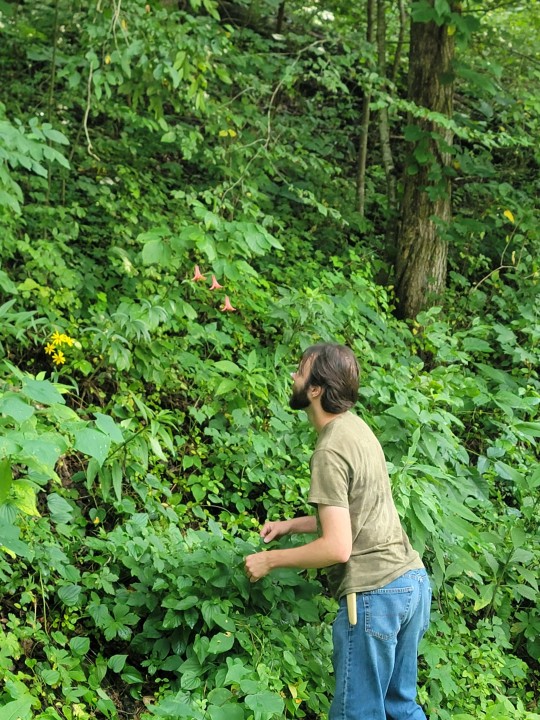

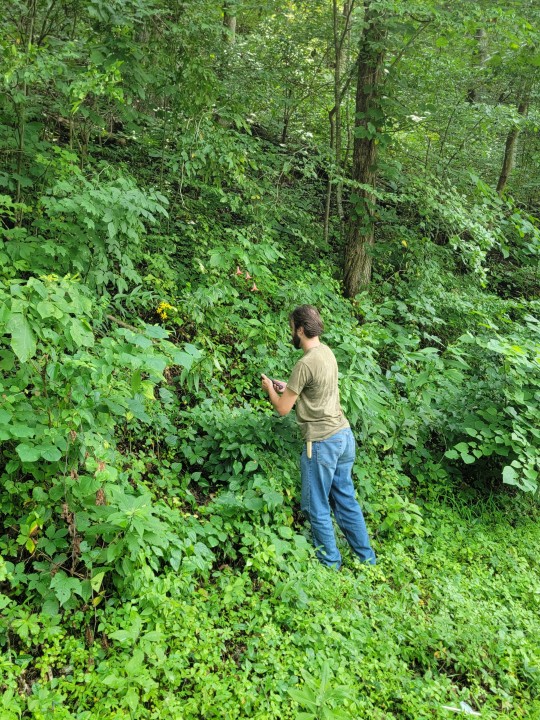


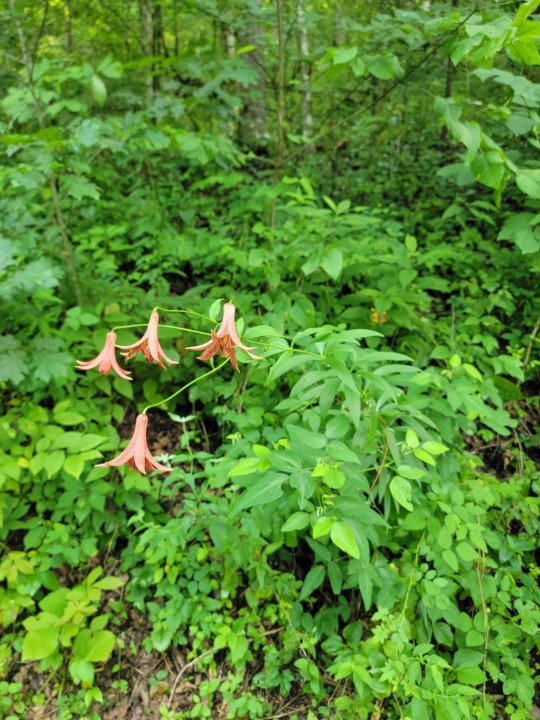

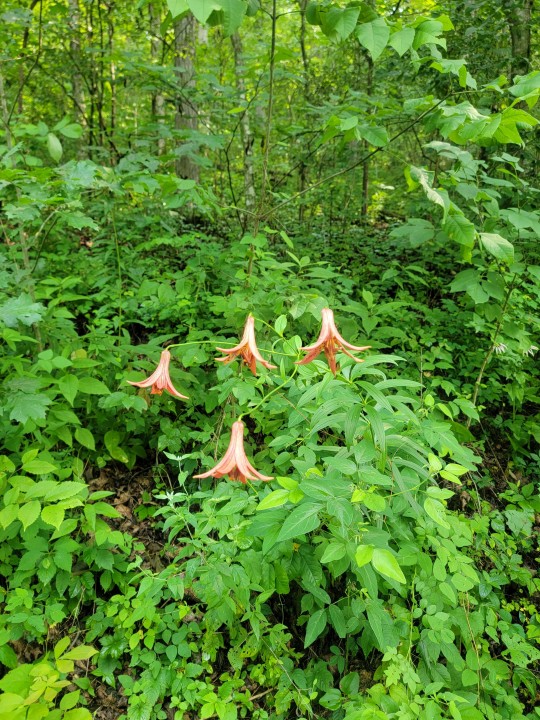
More summer memories: Nothing like driving around Dan Boone National Forest in Ky checking in on the glorious ecotone that is mesic roadside cuts and dry roadside cuts. where the edge of the forest meets sunlight and light competition is more or less reduced there often examples of seldomly seen plant groupings in core but in abundance in edge depending on the health of the forest.
William, mid stoke.
Lillium canadense
Canada lily
19 notes
·
View notes
Text
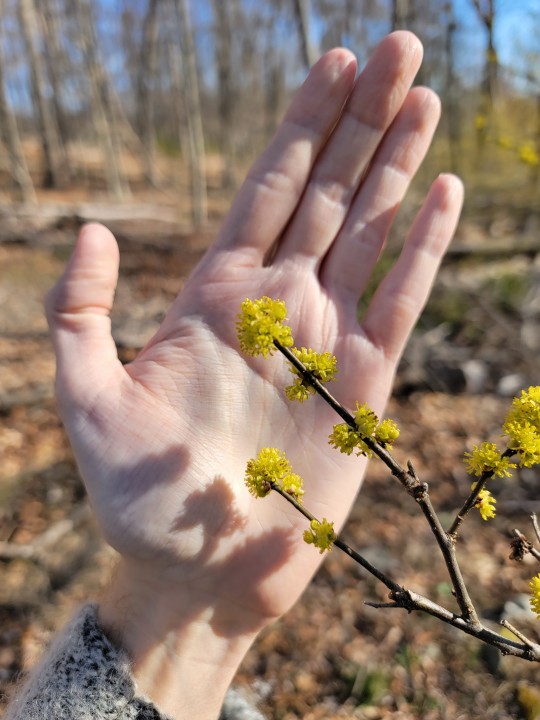
Northern Spice Bush - Lindera benzoin
This small understory shrub/tree is a lovely aromatic spring bloomer. Around April, the understory of less disturbed-mesic eastern forests are typically blanketed by a yellow hue, the flowering habit of this species is bountiful so it makes a great garden species. Additionally the leaves and bark make a wonderful tea, the leaves historically served as an alternate for allspice seasoning for early settlers.
As far as ecology, this species serves as host for several butterfly and moth species. Most notably the spicebush swallowtail, a lovely black winged species with light blue tints around the lower wing. Their caterpillar stage typically hides between folded leaves and has the appearance of large eyes (look them up they're very interesting). The leaves are used as fodder for deer and the berries serve many bird species, I often have trouble finding berries because it's such a popular food source.
#native plant profiles#northern spicebush#lindera benzoin#north eastern american native plants#new jersey#forest#understory shrubs#nature#spring
8 notes
·
View notes
Photo
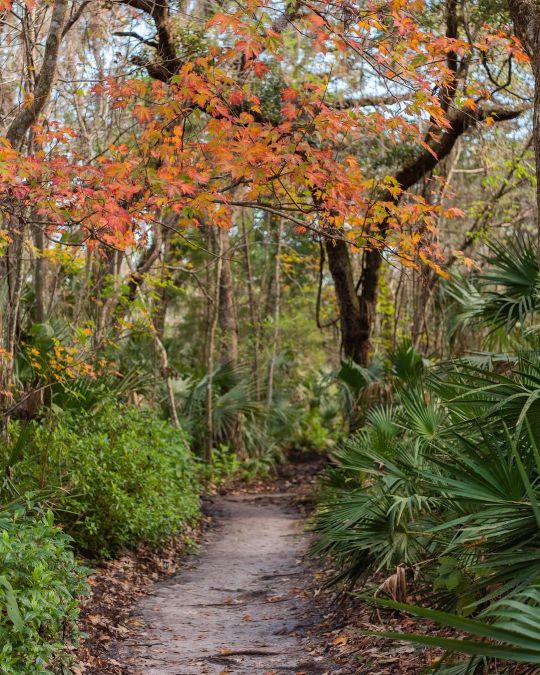


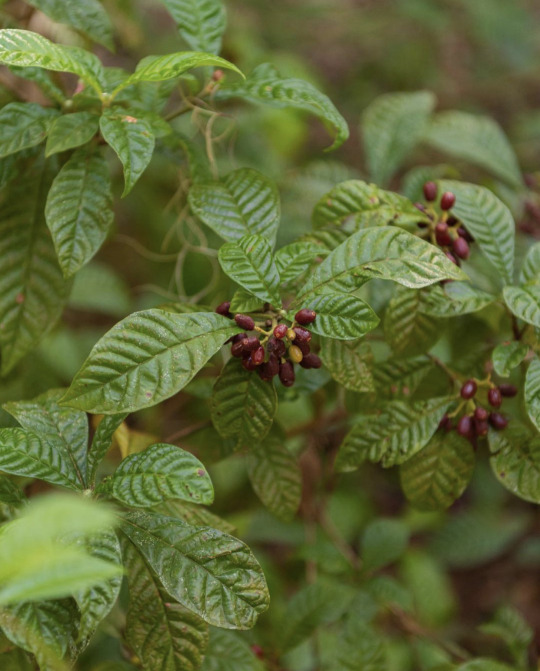

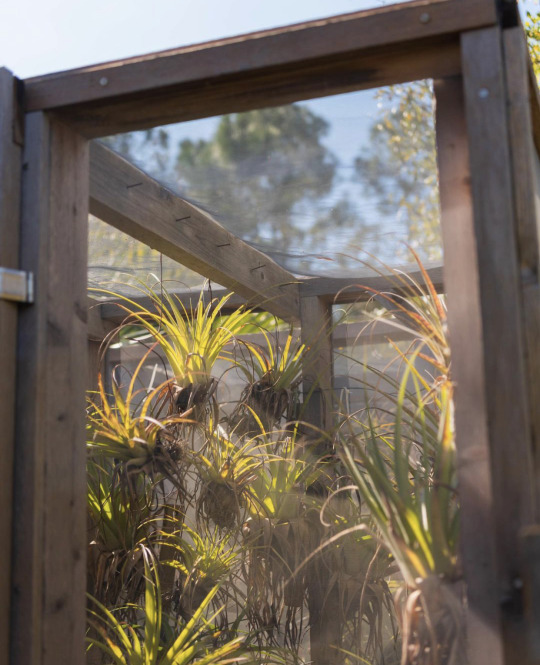

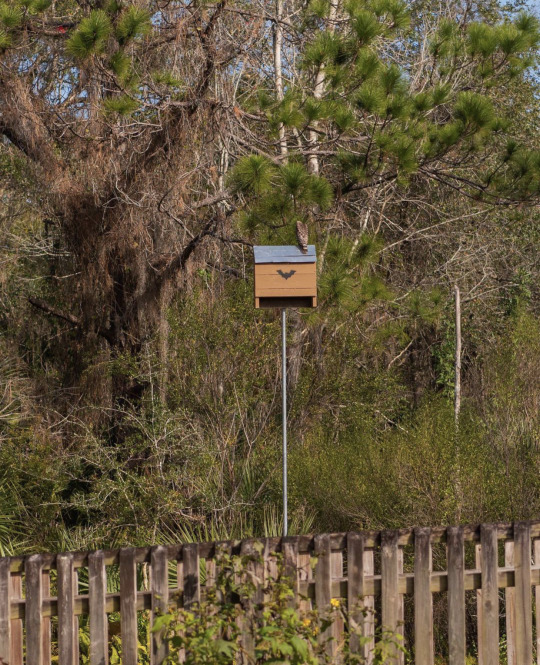
Once upon a time in an Enchanted Forest Sanctuary, there was a @flawildflowers field trip that I attended 2 months ago and then never posted about oops 🙃 We only saw one wildflower (jack-in-the-pulpit, pictured in slides 2/3) as we hiked through one of the forest trails since it was winter, but I still learned SO much! 🌱 We learned not only about wildflowers but also about other plants, wildlife, various habitats, and how they all depend on each other. 🌼 Tours led by nature experts have been a huge part of my nature journey, and I highly recommend it as a way to get outside, get moving, learn something new, and meet fellow nature lovers! 🌼 As a member of @flawildflowers I am able to attend field trips like this (non-members can also attend for a fee) and know that my annual member dues are supporting native, natural Florida. I highly recommend my fellow nature-loving Floridians look into it! 📸 1: Walking path through a mesic hammock 2, 3: Jack-in-the-pulpit wildflower 4: Wild coffee 5: Choose native plants! 6: Air plants in cages to protect them from invasive bugs 7: Spot the blue jay! 8: Anybody know what kind of bat is sitting on the bat house? 😅 🌸 🌼 🌺 #explorida #roamflorida #florida #flstofmind #floridaliving #florida_greatshots #fun_in_florida #LoveFL #nature #naturelovers #getoutdoorsfl #cocoabeach #naturepreserve #naturesanctuary #titusville #enchantedforestsanctuary #jackinthepulpit #wildflowers #Arisaematriphyllum #wildcoffee #bluejay #bathouse #airplants #nativeplants (at Enchanted Forest Sanctuary) https://www.instagram.com/p/CbgUW9Ir4zf/?igshid=NGJjMDIxMWI=
#explorida#roamflorida#florida#flstofmind#floridaliving#florida_greatshots#fun_in_florida#lovefl#nature#naturelovers#getoutdoorsfl#cocoabeach#naturepreserve#naturesanctuary#titusville#enchantedforestsanctuary#jackinthepulpit#wildflowers#arisaematriphyllum#wildcoffee#bluejay#bathouse#airplants#nativeplants
3 notes
·
View notes
Text
This popular flower is in sensational form in New England this summer
New Post has been published on https://sa7ab.info/2024/08/12/this-popular-flower-is-in-sensational-form-in-new-england-this-summer/
This popular flower is in sensational form in New England this summer


Locals and visitors flocking to the Northeast for a New England summer travel experience may notice an exceptional bloom of hydrangea bushes. The bushy, luscious flowers in bright blues, pinks, purples and whites are in or reaching peak bloom.Hydrangeas are native to the Western Hemisphere and eastern Asia. There are about 23 species that are known.STENCHY EXOTIC PLANT IN BLOOM AT BOSTON ARBORETUMGarden communicator C.L. Fornari told Fox News Digital that in the Northeast, the hydrangeas this year are amazing for several reasons.She said that with a wet summer and fall last year, all kinds of good flower buds developed this year. “With these plants, you have to take the ‘hydra’ part of their name seriously,” she said. “We followed that wet haul with a mild winter and all of those buds that they formed in the late summer last year made it through the winter. Now we’ve got spectacular blooms,” said Fornari, who is based in Massachusetts.HOT FLOWER TRENDS FOR 2024: HERE’S WHAT’S IN AND WHAT’S OUT IN THE WORLD OF BLOOMSMark Richardson, director of horticulture at the New England Botanic Garden at Tower Hill in Boylston, Massachusetts, concurred with that.He told Fox News Digital that temperature and cultural factors are important. “I think for this year in particular, we had a lot of rain last year, and we had a very mild winter,” he said. “The combination of those two things really led to a great year for hydrangeas.”Wild hydrangeas are usually found in a mesic forest, often along streams or in rocky areas, but also grow in drier areas.VIRAL FLOWER HACKS ARE BUSTED BY FLORAL EXPERTThey are common from New England to New York through Illinois and Missouri, south to Louisiana and Florida, and in Kansas and Oklahoma, according to the U.S. Forest Service.Fornari said peak bloom for hydrangea bushes is dependent on the type of plant.Bigleaf or Hydrangea macrophylla are the most common type in North America. They have a classic mophead – or open lacecap – bloom reminiscent of Cape Cod’s signature plant, according to the National Garden Bureau.Fornari said the big blue big-leaf flowers seem to be at peak bloom now.STATE FLOWER QUIZ! CAN YOU MATCH THESE BEAUTIFUL FLOWERS WITH THEIR CORRECT STATES?Richardson said that hydrangeas are a great attraction for visitors at the museum this time of year.”Early summer tends to be a bit of a lull in the garden, just in terms of what’s in bloom, and the hydrangeas are really filling in that gap,” he added.Fornari said that when planting hydrangeas, make sure their estimated size meets the location by sighting them appropriately.”There is no way you can make them shorter. They will place their height in one summer and the more you cut them back, the fewer flowers you have,” she said. For more Lifestyle articles, visit www.foxnews.com/lifestyleHer second piece of advice is to “give them the sun or lack of sun that they want.”The hotter the summer, the more the bushes will need afternoon shade, so it is important to make sure they are getting the relief from the sun they need.It is important to make sure the bushes are watered deeply, but deep soaking less often is better than watering a little every day.Fornari warned people to steer clear of relying on fertilizer to help hydrangea bushes.CLICK HERE TO SIGN UP FOR OUR LIFESTYLE NEWSLETTER”It’s not a solution to problems with the hydrangeas,” she said. “Fertilizer can sometimes make the plant a little bigger, but those become weaker stems and the big flowers end up in the mud.”When it comes to winter protection, “prayer works as well as anything else… Some of it is the luck of the draw on winter temperatures,” Fornari said.She is founder of the Cape Cod Hydrangea Festival, which began in 2015 with proceeds going to various local nonprofit organizations.During the event, Cape Coders open their beautiful gardens to admirers across the southeastern part of Massachusetts extending to the Atlantic Ocean. The festival is two weeks long and began on Friday, July 5th.
0 notes
Text
Case Study: Montana Permaculture Design
Montana is a varied state with diverse eco-regions, incorporating parts of the Rockies, of course, as well as some of the Wyoming Basin and portions of the Northern Great Plains. This design is for a client based towards the south-west of the state, in a mesic montane area where small fragments of stable, climax Aspen forest and woodland without conifers can be found.
The primary goals for this…

View On WordPress
#agroforestry#campground design#campsite design#ecosystem restoration#forest garden#Montana permaculture#Montana permaculture design#permaculture#permaculture design#rewilding#riparian planting#silvo-arable#silvo-pasture#sustainability#sustainable#wetland
0 notes
Text
March Hernando Audubon Activities
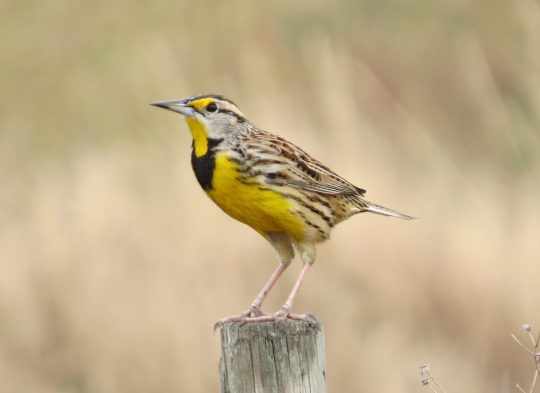
The Hernando Audubon Society works to promote an awareness and appreciation of nature, to preserve and protect natural ecosystems, and to encourage responsible environmental stewardship.
March Hernando Audubon Activities
Hernando Audubon meeting: Birds Do It, Bees Do It - Migrate of Course!
Speaker Mary Keith will discuss why, where, when birds migrate, how we’ve finding out so much more about migrations, and how the birds know where they are going. Mary has been birding most of her life. Since she retired from the University of Florida Extension Service, she has more time to lead bird walks for the Tampa Audubon Society (TAS), watch birds, monitor Bald Eagle nests and wading bird colonies, count Florida Scrub Jays, help organize the Florida Birding and Nature Festival, and participate in Christmas Bird Counts. In 2023 she was elected to the Board of Directors for Audubon Florida as a regional representative for the Gulf Coast region.
The meeting will start at 7 p.m., at Brooksville Woman’s Club, 131 S. Main Street, Brooksville. Free, all are welcome. Contact Bev: 352-686-0460 or [email protected]
Hernando Audubon Birding and Biking Trip: Saturday, March 2.
Meet at 8 a.m. at Bree’s Provisions, 28198 Magnon Drive, in Istachatta. We will bike about 6 miles south before returning. This beautiful section passes through forests and fields, where we will stop periodically to look for birds.
The group size is limited, so please reserve your spot with Claudia: [email protected] or 813-244-0305.
Hernando Audubon Birding Trip to Fort Cooper State Park: Saturday, March 9.
Fort Cooper is at 3100 South Old Floral City Road in Inverness. Meet at 8 a.m. at parking lot #2. After scoping the lake, we will walk a mile on a trail looking for early spring arrivals and resident birds.
Please bring exact change for the $3 park fee. Make reservations with Linda: [email protected] or text 352-428-2629.
Hernando Audubon Birding Trip to Heartwood Preserve: Saturday, March 16.
Meet at 8 a.m. at Heartwood Preserve, 4100 Starkey Blvd., New Port Richey. In the habitat of longleaf pine flatwoods and cypress wetlands, we hope to see or hear Brown-headed Nuthatch, Northern Bobwhite, Bachman’s Sparrow, etc.
Contact Bev: [email protected] or 352-686-0460.
Hernando Audubon Birding Trip to Chassahowitzka Wildlife Management Area: Wednesday, March 20.
Meet at 8 a.m. in the parking lot on the west side of U.S. 19 at 13243 Commercial Way, 6.7 miles north of S.R. 50. Entrance fee is $3.00 per person or $6 per car (free with senior free hunting and fishing license). This property preserves 24,243 acres of sandhill, mesic hammock, and forested wetland habitat. We'll carpool and drive on hard-packed roads, watching and listening for birds. Occasionally we will take short walks in areas that seem promising. A 0.4 mile walk through the swamp on a boardwalk to lovely Buford Spring is optional. 163 species of birds have been reported to eBird from this property, so we expect to see a variety of birds.
The group size is limited, so please reserve your spot with the trip leader: Linda: [email protected] or text 352-428-2629.
Hernando Audubon Beginning Birding, Friday, March 29.
Meet at 8 a.m. at Chinsegut Conservation Center, 23212 Lake Lindsey Road, Brooksville. Learn to identify birds at feeders and during a short walk. There will be binoculars available for use.
Make reservations with Linda: [email protected] or text 352-428-2629.
Read the full article
0 notes
Text








Field Trip to Sanders Park and State Natural Area, Part One (September 15, 2023):
fungi on a tree stump
Calico aster
Ostrich fern
trees
moss on a log
weird fungi under tree bark
Mayapple
abandoned beaver dam
#jessie lynn mcmains#photography#wisconsin#southeast wisconsin#state natural area#mesic forest#my photos#trees#fungi#plants#flowers#ferns#beaver dam#moss
2 notes
·
View notes
Text
Notes of the day Jan 31,2024
xeric-habitat,dry
mesic-moderate moisture
mast years-abundance
oak-Quercus
growth to removal ratio judges health of forest (dosnt account for variables like infections)
sugar maple, beech can grow in low light situations (5%)
acorns germinate -2.5-5cm deep
oak mast (2-10) years
silviculture - growing trees
gypsy moth invasive to usa
grown up savannas = forests
forests stands= groups of same species
old growth maple forest aka asbestos forest
maple stands as fire resilient fire breaks?
deer eat shell and meat of acorn
small animals eat meat of acorns
white oak-sweet acorns
red oak-bitter acorns, get soaked
tannin keeps bugs away
deer like white oak>sugar maple
pokeweed/ dragon berries exist
black bears have dens in trees
retain cavity trees during cultural operations
if some point in the future we got a handle on this gardeners of the earth thing, and oak forests are constantly changing variety of changes, could there be votes deciding whether the forests lean towards savannas or oak hickory or oak maple forests?
combat masting by
thinning
diversity
separation of stands
old growth forests definitions
logged or severely disturbed
state of self replacement
large and old for site
0 notes
Text



Few-flowered Tick-trefoil
Hylodesmum pauciflorum
This species is somewhat uncommon in Missouri and is scattered throughout areas of the southeastern United States. It prefers bottomland or mesic forests with moist, alkaline soils.
Aug. 15th, 2023
St. Louis County, Missouri, USA
Olivia R. Myers
@oliviarosaline
#botany#plants#native plants#flowers#native flowers#wild flowers#wildflowers#Missouri#the ozarks#ozarks#nature#nature photography#plant photography#flower photography#forest#forests#woods#forest floowlr#bottomland woods#tick trefoil#tick-trefoil#desmodium#Hylodesmum pauciflorum#hylodesmum#Missouri nature#Missouri woods#fairycore#naturecore#cottagecore#fabaceae
22 notes
·
View notes
Text
Hybrid Douglas-Fir Trees Hold the Key to Climate Change Adaptation
Hybrid Douglas-Fir Trees Hold the Key to Climate Change Adaptation
https://ift.tt/3sOnB5Q
As the world faces the unprecedented challenges of climate change, scientists are searching for ways to help forests adapt to the new normal. A recent study by Compton and colleagues, published in AoB PLANTS, sheds light on how hybrid Douglas-fir trees could be more resilient to climate change and better suited for reforestation efforts.
Douglas-fir trees are a crucial species for timber production and ecosystem services in North America. They provide habitat for wildlife, stabilize soil, and sequester carbon. However, as the climate warms, these trees are threatened by increasing drought and heat stress. In response, researchers have been exploring the genetic variation within the species to identify the best trees for planting in the face of an increasingly challenging environment.
Image: Canva
The study’s authors focused on the relationship between growth, water use efficiency, and heat tolerance in different varieties of Douglas-fir trees. Their results revealed a trade-off between growth and heat tolerance. In other words, faster-growing trees from warmer climates are less able to withstand heat stress than their slower-growing counterparts from colder climates.
The researchers also discovered that intervarietal hybrid families, with mixed ancestry from coastal and interior varieties, had higher water use efficiency and greater heat tolerance than pure coastal families. This suggests hybridization might be a source of pre-adapted alleles to extreme heat events and drought in an increasingly warming climate. The study further revealed significant genetic variation in water use efficiency, photosynthetic capacity, growth, and tolerance of leaves to heat stress among Douglas-fir families and varieties. In their article, Compton and colleagues write:
Warmer climates bring significant challenges to the survival of Douglas fir populations. While coastal varieties are widely planted due to their fast growth, their low water use efficiency (a trait of mesic-adapted plants) and low tolerance to heat might predispose them to maladaptation to future climate conditions, as suggested by trade-offs between growth, water use efficiency and heat tolerance found in this study. Our study indicates significant genetic variation in water use efficiency (inferred from carbon isotope discrimination), photosynthetic capacity (inferred from %N), growth and tolerance of leaves to heat stress among Douglas-fir families and varieties. High elevation families had higher water-use efficiency and photosynthetic capacity than low elevation families. In addition, families with greater heat tolerance had slower growth and higher water-use efficiency. Intervarietal hybrids, with mixed ancestry from coastal and interior varieties, had higher water use efficiency and higher heat tolerance than coastal families, suggesting hybridization might be a source of pre-adapted alleles to extreme heat events and drought in increasingly warming climate conditions.
Compton et al. 2023
READ THE ARTICLE
Compton, S., Stackpole, C., Dixit, A., Sekhwal, M.K., Kolb, T. and De la Torre, A.R. (2023) “Differences in heat tolerance, water use efficiency and growth among Douglas-fir families and varieties evidenced by GWAS and common garden studies,” AoB PLANTS, 15(2), p. lad008. Available at: https://doi.org/10.1093/aobpla/plad008.
The post Hybrid Douglas-Fir Trees Hold the Key to Climate Change Adaptation appeared first on Botany One.
via Botany One https://botany.one/
May 02, 2023 at 05:42PM
0 notes
Text
Prescribed fire could reduce tick populations and pathogen transmission
https://sciencespies.com/nature/prescribed-fire-could-reduce-tick-populations-and-pathogen-transmission/
Prescribed fire could reduce tick populations and pathogen transmission

Prescribed fire — a tool increasingly used by forest managers and landowners to combat invasive species, improve wildlife habitat and restore ecosystem health — also could play a role in reducing the abundance of ticks and the transmission of disease pathogens they carry, according to a team of scientists.
For a recently published paper, the researchers reviewed the scientific literature on the effects of fire on forest composition and structure and its influence on ticks and their wildlife hosts. They concluded that prescribed burning can help restore forest habitats to a state less favorable to several species of disease-carrying ticks and could be an effective management tactic for reducing their populations.
The era of fire suppression, which began roughly in the early 1900s and has continued for more than a century, changed the species composition of Eastern forests, creating habitats and microclimates that favored the survival and spread of ticks, noted lead author Michael Gallagher, research ecologist at the Silas Little Experimental Forest, Northern Research Station, U.S. Department of Agriculture Forest Service, New Lisbon, New Jersey.
“Before the arrival of Europeans, Eastern forests were ‘fire-dependent,’ characterized by fire-tolerant species such as pine, oak and chestnut,” Gallagher said. “Frequent low-to-moderate intensity fires would have fostered dry conditions, thinned the understory and diminished layers of leaf litter, which in turn would have created microclimates with lower humidity and higher temperatures.
“These lower-moisture, higher-temperature — or xeric — conditions were likely to limit ticks’ activity, interaction with reservoir hosts and overall populations,” he said.
Since fire has been suppressed and forests have recovered significantly from periods of deforestation caused by logging and agricultural land-clearing, fire-sensitive mesic forest species — those that thrive in and contribute to moister environments — have become dominant, a process known as mesophication, he explained.
advertisement
“This mesophication of forests has been widely observed throughout the eastern United States,” Gallagher said. “In the absence of fire, these mesic habitats moderate forest temperatures and humidity, promote denser understory growth, and cause greater moisture retention in forest litter. This creates microclimates within the ideal range for tick survival and optimizes conditions for ticks to ‘quest,’ or seek hosts.”
The number of tick-borne disease cases in the United States has trended higher in recent decades, ranging to as high as nearly 60,000 annually and accounting for more than 75% of vector-borne disease cases, according to the researchers, who published their analysis in Ecological Applications. Tick-borne pathogens can cause Lyme disease, anaplasmosis, ehrlichiosis, Powassan disease, Rocky Mountain spotted fever, tularemia and other illnesses.
“Research suggests that conditions contributing to this rise in cases resulted from climate change, growth of certain wildlife populations, land-use change and, likely, forest change due to the decline of fire frequency,” said co-author Erika Machtinger, assistant professor of entomology in Penn State’s College of Agricultural Sciences. “These changes have created conditions known to drive tick abundance, tick-wildlife host interactions and expansion of ticks’ geographic range.”
In addition to fire’s direct effect on tick survival by subjecting them to heat high enough to cause mortality, several indirect effects of fire-driven forest modification can suppress tick abundance and pathogen transmission, she said.
“Reductions in canopy and understory density and the creation of gap space from prescribed burning can increase sun exposure and wind speed and reduce evapotranspiration from plants, promoting hotter and drier conditions during the daytime and colder temperatures at night,” said Machtinger, who directs the college’s Veterinary Entomology Laboratory. “These more frequent moisture and temperature extremes can exceed tick tolerances and affect behavior, development time, molting and overall survival.”
She also pointed out that thinner layers of leaf litter due to burning could reduce insulation and lower the temperature of soils where ticks overwinter, causing higher mortality. In addition, studies indicate that fire-driven habitat change is likely to increase the population of certain wildlife predators of ticks, such as red imported fire ants and bobwhite quail.
advertisement
“On the other hand, reduced woody plant density and debris as a result of fire actually may decrease populations of some small mammal hosts of ticks by removing cover and making them more vulnerable to predation,” Machtinger said. “This would reduce ticks’ interaction with hosts that serve as reservoirs of disease pathogens.”
The researchers noted that the current paradigm for tick-borne disease control places nearly all the burden on the individual to prevent tick bites, while broader-scale tick management by professionals has been insufficient to stem increases in tick-borne pathogen transmission.
“Although the fire suppression era persists in many parts of the United States, prescribed burns have been used successfully in a growing number of fire-suppressed landscapes in recent decades,” Gallagher said. “We believe there’s an opportunity to reduce the number of ticks by using prescribed fire to restore the health of forest ecosystems, and we think this approach can be integrated as part of a multipronged strategy for managing ticks and tick-borne diseases.”
Other co-authors of the paper are Jesse Kreye, assistant professor of fire and natural resources management, and Nathaniel Schmidt, former master’s degree student, Penn State; Alexis Everland, New Jersey Department of Environmental Protection, Forest Fire Service, New Lisbon, New Jersey; and Nicholas Skowronski, USDA Forest Service, Northern Research Station, Morgantown, West Virginia.
Penn State Extension and USDA’s National Institute of Food and Agriculture supported this work.
#Nature
#10-2022 Science News#2022 Science News#acts of science#Earth Environment#earth science#Environment and Nature#everyday items#Nature Science#New#News Science Spies#October 2022 Science News#Our Nature#planetary science#production line#sci_evergreen1#Science#Science Channel#science documentary#Science News#Science Spies#Science Spies News#Space Physics & Nature#Space Science#Nature
0 notes
Photo

Broad leaf or Carolina spring Beaut’
Claytonia caroliniana
Virginia spring beaut leaves in background just starting to leaf out
Claytonia virginica
Photographed in RRG in mixed mesophytic woodland, Carolina spring beaut has a few great lakes region United States pops and is mainly found in the core regions of the Appalachian Mountains. A true disjunction as a lower ozark plat pop is in Arkansas; where as the rich alkaline mesic woods and bottomland forests are packed with Virginia spring beaut until you hit semi arid regions and where the central plains starts becoming the rocky mountain region.


26 notes
·
View notes